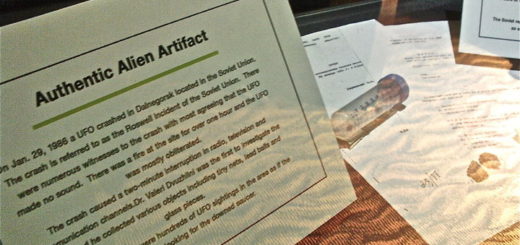Precise Mass Of A Giant Black Hole Measured For The First Time

The mass of a supermassive black hole at the center of giant elliptical galaxy NGC 1332 has been precisely measured by a team of astronomers from the University of California, Irvine and other universities.
NGC 1332 is located 73 million light years away from Earth and now, astronomers know that that the black hole has a mass 660 million times greater than the mass of the sun.
This measurement, which is far more precise than previous ones, was possible thanks to ALMA located at 5,000 meters altitude in the Atacama Desert of northern Chile. ALMA is a powerful array of 66 radio telescopes designed to conduct observations at millimeter and submillimeter wavelengths. Dense, cold clouds of interstellar gas and dust don’t emit visible light, but glow brightly at wavelengths that ALMA can observe.
“For a precise measurement, we need to zoom in to the very center of a galaxy where the black hole’s gravitational pull is the dominant force. ALMA is a fantastic new tool for carrying out these observations,” said Aaron Barth, UCI professor of physics & astronomy and lead author on the study.
“This is the first time that ALMA has probed the orbital motion of cold molecular gas well inside the gravitational sphere of influence of a supermassive black hole.”
“We’re directly viewing the region where the cold gas is responding to the black hole’s gravitational pull. This is an exciting milestone for ALMA and a great demonstration of its high-resolution capability,” Barth explained.
To calculate the mass of a black hole in a galaxy’s center, astronomers must be able to measure the speed of something orbiting around it.
ALMA can observe radio-wavelength light emitted by molecules in these structures. The emission is shifted to shorter or longer wavelengths by the Doppler Effect depending on whether the disk’s gas is rotating toward or away from observers, which enables astronomers to map the motion of the gas. In this case, astronomers focused on radio-wave emissions from carbon monoxide (CO) molecules, since the CO signal is bright and readily detected with ALMA.
In September 2014, Barth’s team obtained an initial ALMA observation of CO emissions from NGC 1332, which revealed that the galaxy indeed contained a flattened disk of cold molecular gas in rapid rotation about its center, making it an ideal target for a precision measurement of the black hole’s mass.
The disk extends to a radius of nearly 800 light-years from the galaxy’s nucleus; only within the innermost 80 light-years is the black hole’s gravitational pull the dominant force. Astronomers refer to this as the black hole’s “sphere of influence.” Research is published in the journal The Astrophysical Journal Letters.



 Creators of mankind
Creators of mankind Description of “Tall white aliens”
Description of “Tall white aliens” Where they came from?
Where they came from? About hostile civilizations
About hostile civilizations The war for the Earth
The war for the Earth “Tall white aliens” about eternal life
“Tall white aliens” about eternal life Video: “Nordic aliens”
Video: “Nordic aliens” Aliens
Aliens Alien encounters
Alien encounters The aliens base
The aliens base UFO
UFO Technology UFO
Technology UFO Underground civilization
Underground civilization Ancient alien artifacts
Ancient alien artifacts Military and UFO
Military and UFO Mysteries and hypotheses
Mysteries and hypotheses Scientific facts
Scientific facts


















